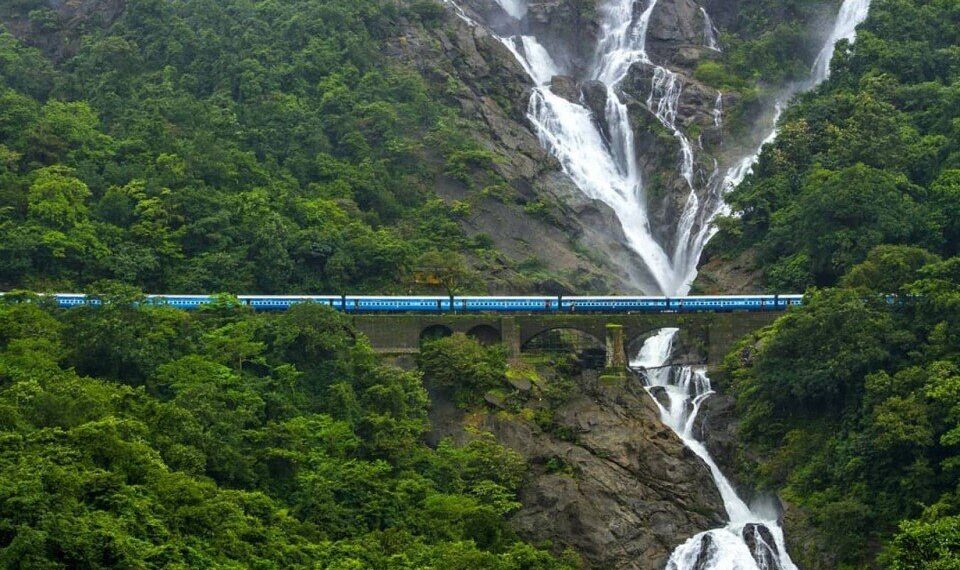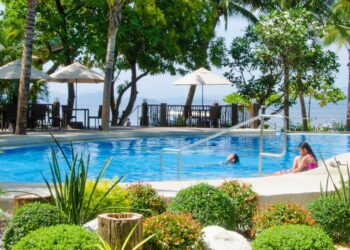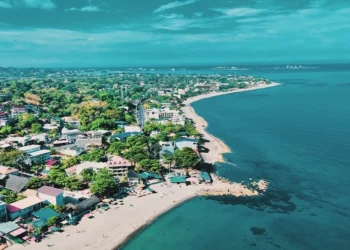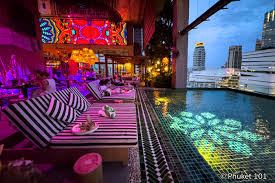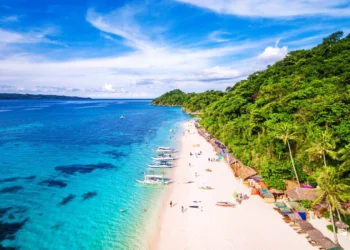There’s a place in the Western Ghats, right where Goa and Karnataka nudge each other, that feels like nature decided to show off. Dudhsagar Falls—its name means “Sea of Milk,” and when you see that white flood pouring down over 300 meters, you don’t question why. The forest around it is thick, alive, a green curtain that parts only for the brave or the curious. This isn’t a spot you stumble across; it’s a destination that asks something of you, then gives back tenfold—adventure, peace, a moment to feel small in the best way.
The Way There: A Trek Worth Taking
You don’t just arrive at Dudhsagar. You go after it. Most start from Castle Rock in Karnataka, facing a 12-kilometer haul each way, or pick the shorter thread from Kulem in Goa. Either path pulls you through jungle so dense it swallows the sky, over rocks that shift underfoot, past streams that catch the light and dare you to cross. The falls announce themselves early—not with sight, but sound, a low rumble that grows as you press on.
It’s not a cruel trek, but it has its moods. Monsoon turns the dirt to a stubborn paste, clinging to your legs; summer bakes it hard, the heat pressing down like a hand. Shoes need grit—sandals slip and sulk—and I’ve seen folks lean on a stick, snatched from the trailside, to keep steady. You’ll cross railway tracks—trains still roll here, framing the falls like a painter’s stroke—and step into tunnels where the air hangs cool and heavy. Every bit of it, the strain and the stillness, builds to that first glimpse, and it’s worth it.
A thought: Rise with the sun, say 6 a.m., before heat or crowds steal the quiet. Bring water, something to chew on—there’s no stall waiting. Monsoon’s a marvel, but it bites; check the skies first. Beyond the Drop: What Lies Around
When you reach Dudhsagar and let its scale sink in—it takes a minute, maybe more—the land nearby has its own stories to tell.
The Jeep Ride from Kulem
From Kulem, a jeep can carry you 11 kilometers to the falls’ feet, cutting through Mollem National Park. It’s a jostling thing—dust in your teeth, wind tugging at you—but the woods open up: deer freeze mid-step, monkeys peer down, and once in a rare while, a leopard’s outline haunts the shadows. You step off close enough to catch the mist, a soft hello from the water.
The Pool at the Bottom
Where the falls land, a pool waits—cold as mountain breath, clear as glass. It’s not deep everywhere, so you can wade in, feel the chill wake you up. Keep an eye out, though; monkeys here have quick hands and no manners. After the walk or the ride, it’s a gift, that icy rinse.
Mollem’s Deeper Paths If you’ve got hours to spare, Mollem National Park stretches out, quieter than the falls’ roar. Birds cut through—kingfishers like blue sparks, hornbills with their heavy calls—and the trails let you breathe it in slow. It’s not loud with people, just a steady hum of life.
Where to Lay Your Head: Simple Havens
Dudhsagar doesn’t dress up with grand hotels. It’s humbler, and that fits.
Camps Under the Stars
Near Kulem or Castle Rock, you can sleep in tents—plain, with a fire to sit by, maybe rice and lentils if the camp’s kind. For ₹1,000-₹2,000 a night, you trade walls for a sky full of stars and a morning dipped in fog.
Kulem’s Quiet Rooms
Kulem has guesthouses—beds that hold you, a fan that tries, sometimes a warm dribble of water. At ₹500-₹1,500, they’re a soft landing, nothing fancy, just enough.
Mollem’s Modest Comfort
In Mollem, places like Dudhsagar Spa Resort give you cool air, a proper rest, for ₹2,000-₹3,000 a night. It’s not opulence, but it holds you well if the park’s your aim.
Food to Fill You: Honest and True
What you eat here comes from the ground, the hands, the heart—no fuss, just flavor.
Stalls by the Way
Kulem’s roadside spots pour chai, hand you vada pav, fry bhajiyas—spiced and hot for ₹20-₹30. A coconut cracked open or sugarcane squeezed cold keeps you going, tasting of the place itself.
Goan Plates
Mollem might bring fish curry over rice—coconut’s depth, a whisper of fire—for ₹100-₹200. No fish? Bhakri with a vegetable pot, warm and rooted, does the same.
A Sweet Close
Jalebis drip golden at the stalls, banana fritters soften the bite. Bebinca’s harder to find, but its layers sing when you do. Little things, big enough after the day.
A Few Words of Sense: Planning It Right
When to Go: Monsoon, June to September, makes the falls a giant—but it’s wet, tricky, bold. Winter, November to February, softens the edge, clears the view, suits most.
What to Carry: Water, a hat, sun’s armor, bug-chaser. Rain might call for a cloak.
Money in Hand: Cash is all—ATMs hide far off; small bills smooth the ride.
Tread Lightly: This land’s alive—take your scraps, skip the feeding, hush your voice.
How You Get There: Trains roll to Castle Rock or Kulem from Goa, Karnataka; jeeps or your feet finish it.
Why It Stays With You
Dudhsagar isn’t a place you check off and forget. It digs in—the water’s endless drum, the forest’s wet sigh, the pull in your bones from getting there. You stand under it, tiny against its rush, and it’s not spoiled by crowds or signs. Wade in the pool, rattle through the park, or sit with it a while—it shifts something. It’s not easy, and that’s why it lasts, why you’ll carry it home and wonder when you’ll go back.
